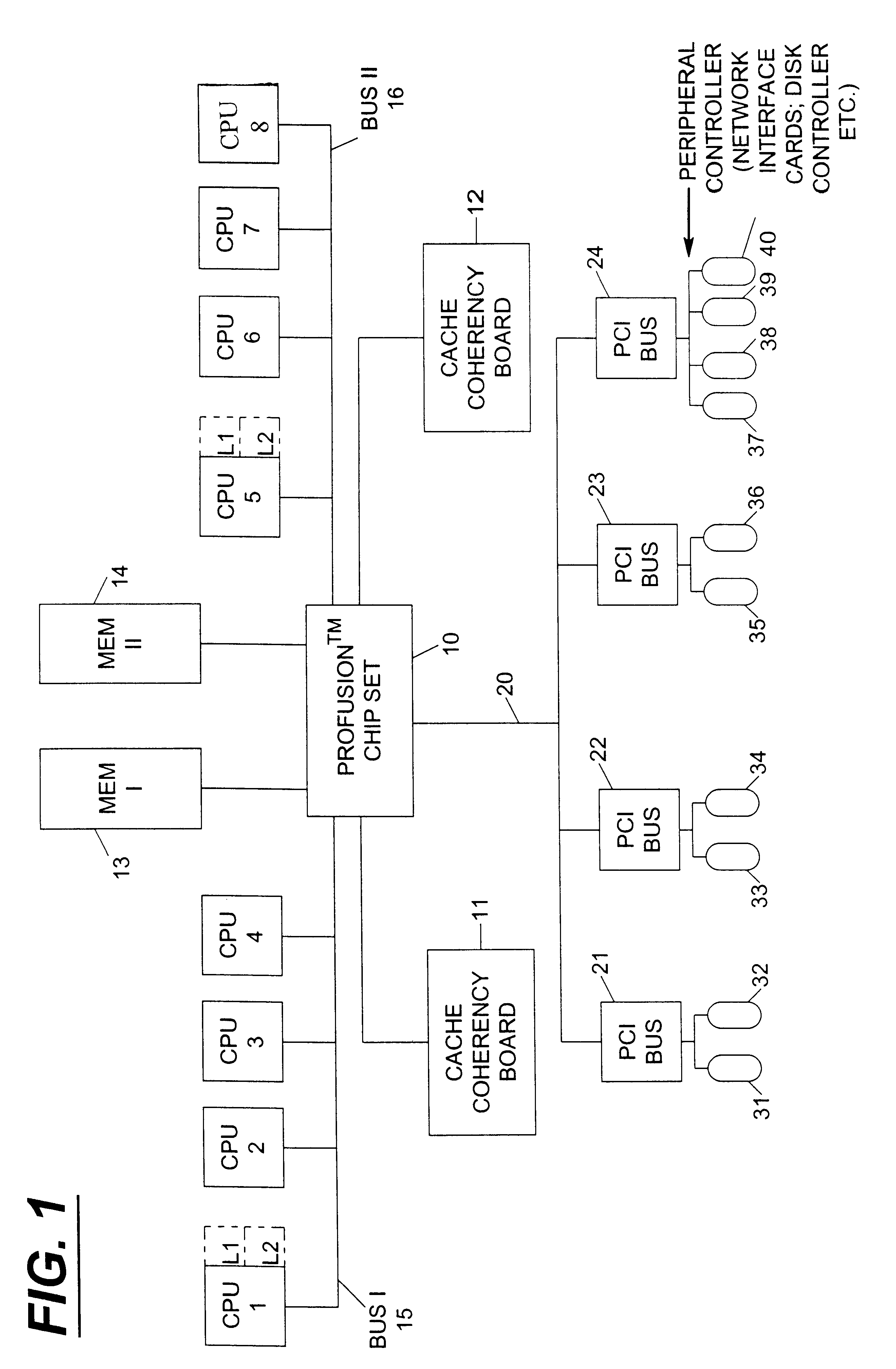Affinity checking process for multiple processor, multiple bus optimization of throughput
- Summary
- Abstract
- Description
- Claims
- Application Information
AI Technical Summary
Benefits of technology
Problems solved by technology
Method used
Image
Examples
Embodiment Construction
The environment presented which utilizes the affinity checking process for multiple bus optimization and throughput is illustrated in one example of FIG. 1.
A set of central processing units CPU's 1, 2, 3, 4 is connected to a first bus 15 (bus I) which is in communication with a Profusion.TM. chip set 10.
A second group of processors, central processing units (CPU's) 5, 6, 7, and 8, are connected for operation on a second bus 16 (bus II) which also connects to the Profusion.TM. chip set 10. Each processor (CPU) will have a first (L1) and second (L2) level cache which is illustrated by the dotted blocks L1 and L2 to indicate that each processor has a first and second level cache.
The Profusion.TM. chip set 10 is connected to a first memory 13 (MEM I) and second memory 14 (MEM II). Additionally, the chip set 10 provides a cache coherency board 11 for the first group of processors (CPU's 1-4) on the first bus 15 and also provides for a second cache coherency board 12 which services the se...
PUM
 Login to View More
Login to View More Abstract
Description
Claims
Application Information
 Login to View More
Login to View More - R&D
- Intellectual Property
- Life Sciences
- Materials
- Tech Scout
- Unparalleled Data Quality
- Higher Quality Content
- 60% Fewer Hallucinations
Browse by: Latest US Patents, China's latest patents, Technical Efficacy Thesaurus, Application Domain, Technology Topic, Popular Technical Reports.
© 2025 PatSnap. All rights reserved.Legal|Privacy policy|Modern Slavery Act Transparency Statement|Sitemap|About US| Contact US: help@patsnap.com



